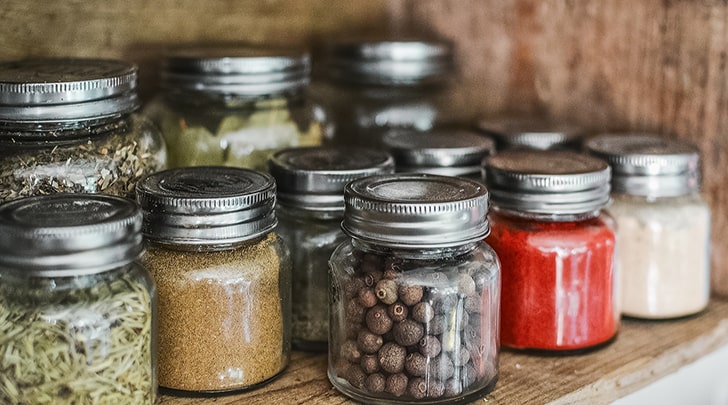Advantages And Disadvantages Of Packaging Bottled And Jarred Packaged Goods
Non-bulk manufactured items, such as bottled and jarred packaged goods, require special packaging. For example, jarred packaged goods contain liquids, and these jars are typically flammable. These jars are expensive, but they are recyclable. Additionally, they are gas-tight, which means that moisture and air cannot enter. While this is useful for dry foods like dried fruits and vegetables, it is not a good option for cooked meals, since moisture can spoil them quickly.
Packaging of non-bulk manufactured items
Unlike bulk packaging, non-bulk manufactured items can be transported in smaller quantities. For example, boxes and jerry cans are both acceptable forms of non-bulk packaging. These types of containers are generally smaller than a standard shipping box and must have a volume that doesn’t exceed 450 litres. They should also be capable of carrying 454 kg of water. In most cases, smaller types of goods will be transported in non-bulk packaging.
Bulk packaging includes a freight container, transport vehicle, or other HazMat packaging if the conditions are met. However, large packagings must meet specific requirements, including compliance with the standards in subparts P and Q of part 178. A large packaging is one that holds at least 450 liters of liquid or gas, which is approximately 119 gallons. Depending on the nature of the product, this may also be a truck.
Unlike retail stores, bulk packaging is not limited to food stores. Big-box stores and electronics retailers commonly use bulk packaging to sell their products. In addition to food and beverages, other items are packaged in boxes and bags. These types of packaging also allow retailers to stack goods in warehouses, making inventory management easier. They often come with plastic bags, making them easy to store leftovers or resell as-is.
Non-bulk packaging also needs to meet certain standards. Non-bulk packages containing hazardous materials must be shipped according to the regulations for United States, United Nations, and international organizations. By familiarizing yourself with these terms, you can select the proper non-bulk package for your product. Be sure that the packaging meets these regulations and is properly assembled. Otherwise, you risk receiving a product that contains a dangerous substance.
For chemical products, DOT and UN standards require packaging to state the quantity of each item. Packaging should also include a UN number and the year of manufacture. Containers must be labeled according to DOT and IATA regulations. The regulations vary between countries, so check the labeling requirements before packaging your product. You may be surprised by the requirements and benefits of container packaging. There’s a right packaging solution for your business – contact DGL Group today.
Bulk packaging can contain both hazardous and non-hazardous materials. The common sense approach to safety dictates that employees follow basic safety regulations, such as storing chemicals in the right places and wearing protective gear. However, when it comes to hazardous materials, environmental laws typically dictate proper disposal. Regulations also spell out preemptive handling procedures and spill mitigation measures. Regulatory compliance must be a top priority. It’s worth it to spend more time on preventing hazardous materials from contaminating your company’s operations.
Packaging of food
There are a few reasons why plastic is not a good choice for packaging of food bottles and jarred goods. Plastic is more expensive than aluminum and deteriorates after being used. Aluminum is environmentally friendly and does not rust. Wooden packaging is also an option, but it is not as sturdy or as light as plastic or metal. Depending on the product and the size of the container, wooden packaging may not be the best choice.
The bottle and jar are the most common pack types. Bottled and jarred goods are convenient and can keep products fresh for a long time. However, children under three years of age are unlikely to use packaged goods. Older people with reduced manual dexterity may have trouble opening packages. Jars and bottles come in a variety of colors, shapes, and sizes. They are also difficult to store in cabinets or drawers.
The use of glass containers is an ancient practice. Many foods were originally stored in glass jars for longer storage. Modern people are increasingly using cans and plastic for food storage. Despite these advantages, glass bottles have recently made a comeback. Wine in glass bottles has become popular as an alternative to cans and plastic. These products also have many other benefits, including being reusable. However, glass containers are not the best option for all food products.
Jarred and bottled-packed items are easy to find in most stores. While their benefits are numerous, they still have a few disadvantages. Jars and bottles have low manufacturing costs and are more durable than plastic. Jarred and bottled foods have the added benefit of extending the shelf life of food and preventing the product from spoiling. They also provide information to consumers, such as nutrition facts, and instructions for use.
Glass containers were first used in Ancient Egypt and Syria. While the technology for making bottles and jars has evolved, the technology used for making them has remained largely the same. In 1900, the first automatic bottle-making machine was developed and led to mass production of these products. Many household chemicals and other food products are still packaged in glass containers. These conveniences come with hidden dangers. Consumers must choose carefully, however, whether a particular product is worth the expense.
Glass jars have been used for storing food since ancient times. Glass jars are recyclable and non-toxic. But they are expensive. They are also gas-tight, so moisture and air cannot get inside. While glass jars are ideal for storing frozen and dry food, it is not recommended for cooked meals because moisture can spoil them quickly. But glass jars are perfect for storing liquids, as they tend to stay fresher longer than plastic jars.
Packaging of bottled and jarred packaged goods
Bottled and jarred packaged goods are much safer for humans to consume than loose-packed products. They also protect the contents from toxins, as jar lids protect from contamination. However, the packaging process also causes a lot of waste. It accounts for a large portion of the cost of manufacturing and transporting food, and can result in higher final costs. In this article, we will discuss the advantages and disadvantages of packaging bottled and jarred goods.
Most plastic packaging is not biodegradable, and it harms other living organisms. Jarred packaged goods, on the other hand, are recyclable but the process is time consuming. Glass jars, for example, are more likely to break and are considered unhygienic. In addition, many consumers prefer to purchase packaged meals over their own unpackaged options. They are generally perceived to contain higher quality, are free of pathogens, and have a beautiful packaging. Some jars even include a detailed description of the product.
Packaging of bottled and jarred packaged good has long been a popular option in the retail and food industries. They are ideal for protecting products from damage during shipping, while providing an appealing presentation. A well-designed jar or bottle will make a strong first impression on a consumer, increasing the likelihood that they’ll buy the product. You can choose between a variety of different types of jars and bottles, each with its own benefits and drawbacks.
When compared to traditional packaging methods, jars and bottles are much easier to handle than normal plastic. They’re also very compact, and can fit in small spaces. And they’re much more durable – most of these types of packaging will hold up for years. However, the benefits of packaging bottled and jarred packaged goods outweigh their drawbacks. These packages are beneficial for the producer and the consumer.
Bottled and jarred packaging of food and beverages is a worldwide phenomenon. While many people eat and drink at home, preparing a nutritious meal is not always possible. These prefabricated meals in jars and bottles provide an easy, convenient option for busy people. However, these prefabricated meals can be quite expensive. That’s why many people choose to buy them in glass containers. But, jars and bottles are not the only containers available.
The volume of bottled and jarred packaged goods has increased exponentially since 2013. The number of jarred packaged goods will continue to increase over the next two decades. While most of these products are safe to eat out of the packaging, some may require refrigeration, heating, or proper handling to make them edible. These factors will help you choose the right packaging solution for a variety of products. The benefits of packaging jarred and bottled goods are numerous.

